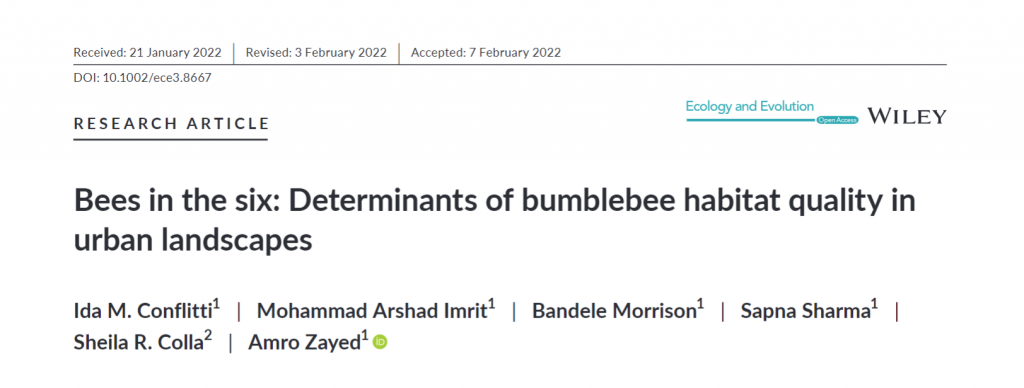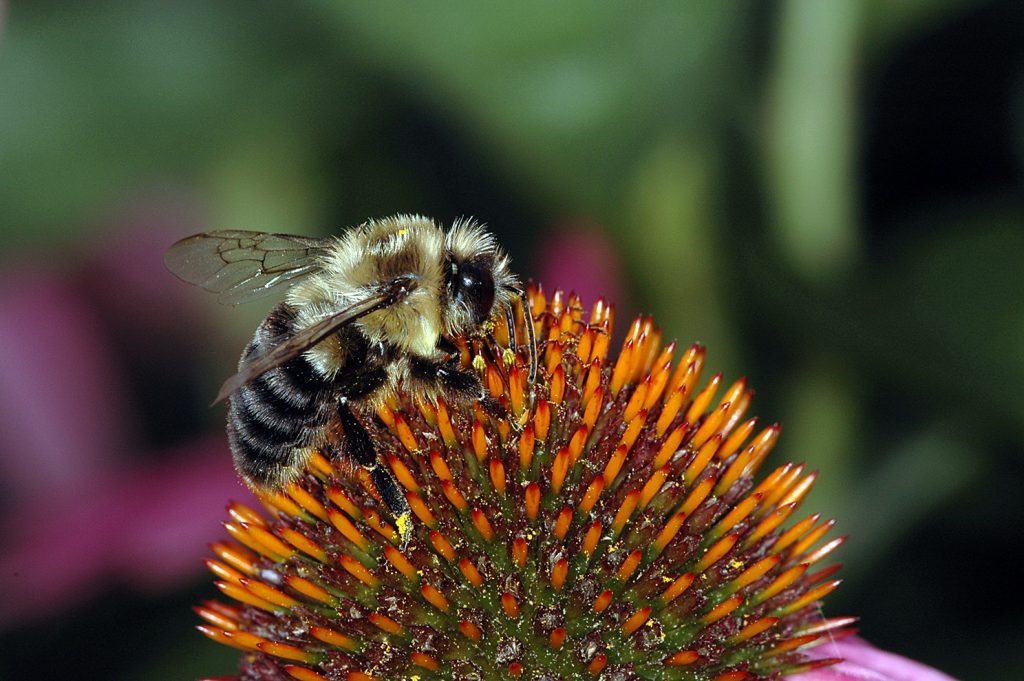Now published – “Bees in the Six”
Cities are home to more than just huge populations of people and their altered environments. They can also sustain a large number of native and even at-risk species of bees and other wildlife. “Unfortunately, we currently lack research about specific features of urban environments that can enhance the fitness of pollinators.” – until now!

Genetic analysis of surveyed bees showed that dense infrastructure, like buildings, roads, and other paved surfaces, were associated with greater foraging distances for the the common eastern bumblebee (Bombus impatiens) – meaning that they need to fly further for food and can therefore dedicate less energy to raising young. Alternatively, the relative density of houses in Toronto was associated with shorter foraging distances, as they likely provide foraging opportunities in the absence of city parks and watershed forests.
Further, this analysis was unable to associate human income with either bumblebee foraging distance or colony density. Since no evidence of the “luxury effect” in Toronto was found, the benefits of pollination services along with opportunities to observe wild bumblebees and to engage in bumblebee conservation is not restricted to a subset of Toronto’s population.
Conflitti et al., 2022
“Our analysis suggests two simple strategies for improving bumblebee habitat within cities. First, conversion of paved surfaces to functional green space such as parks and meadows is likely to have a significant influence on the quality of pollinator habitats in Toronto. Second, … converting aesthetic green space (i.e., lawns…) into more functional natural green space (e.g., flowering meadows…) can improve the foraging opportunities of bumblebee colonies in Toronto.”
Southern Ontario native plants that would support wild bumblebees and be highly attractive to other native pollinators include: willow (Salix sp.), maple (Acer sp.), black-eyed Susan (Rudbeckia hirta), Canadian goldenrod (Solidago canadensis), New England aster (Symphyotrichum novae–angliae), and purple coneflower (Echinacea purpurea).
